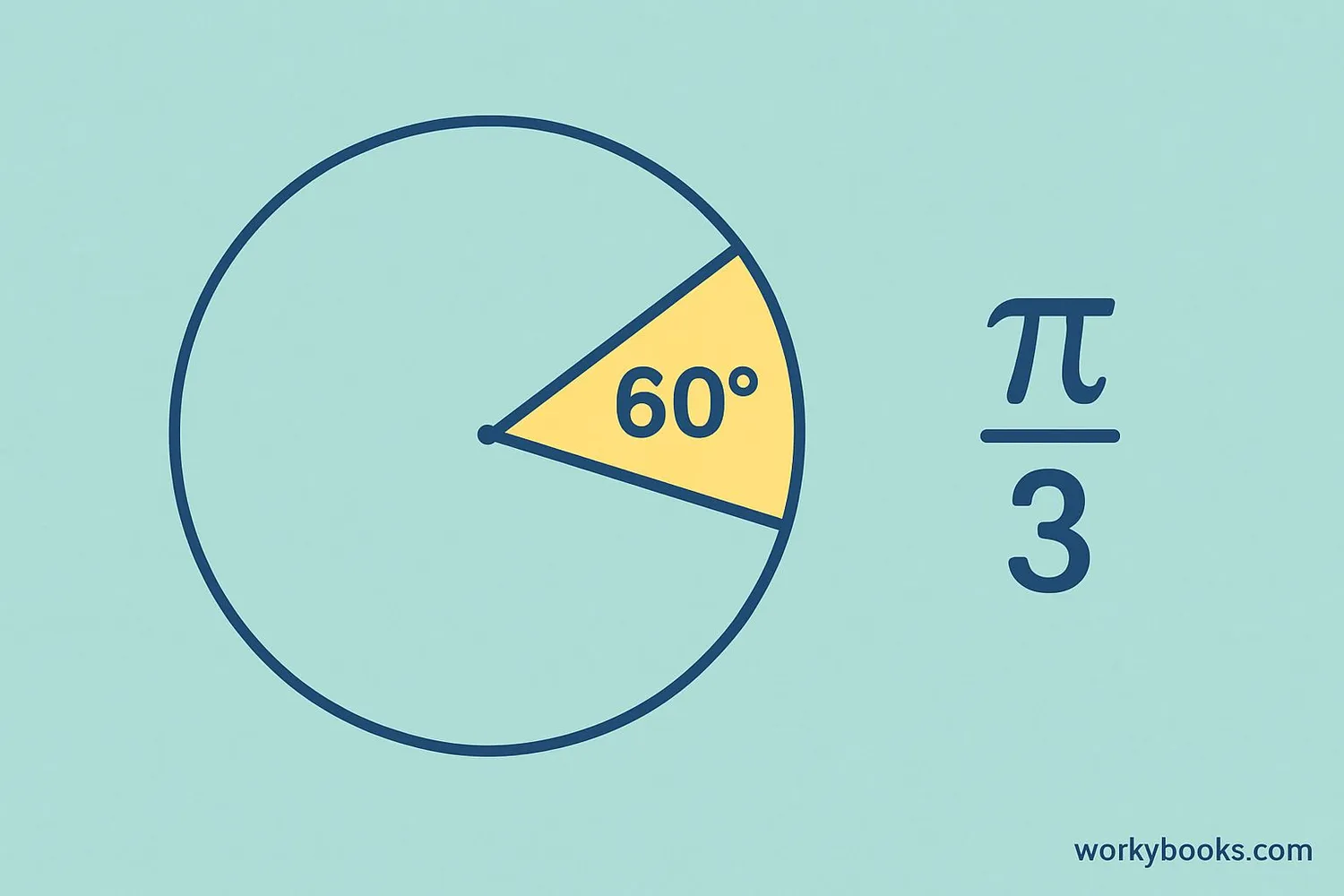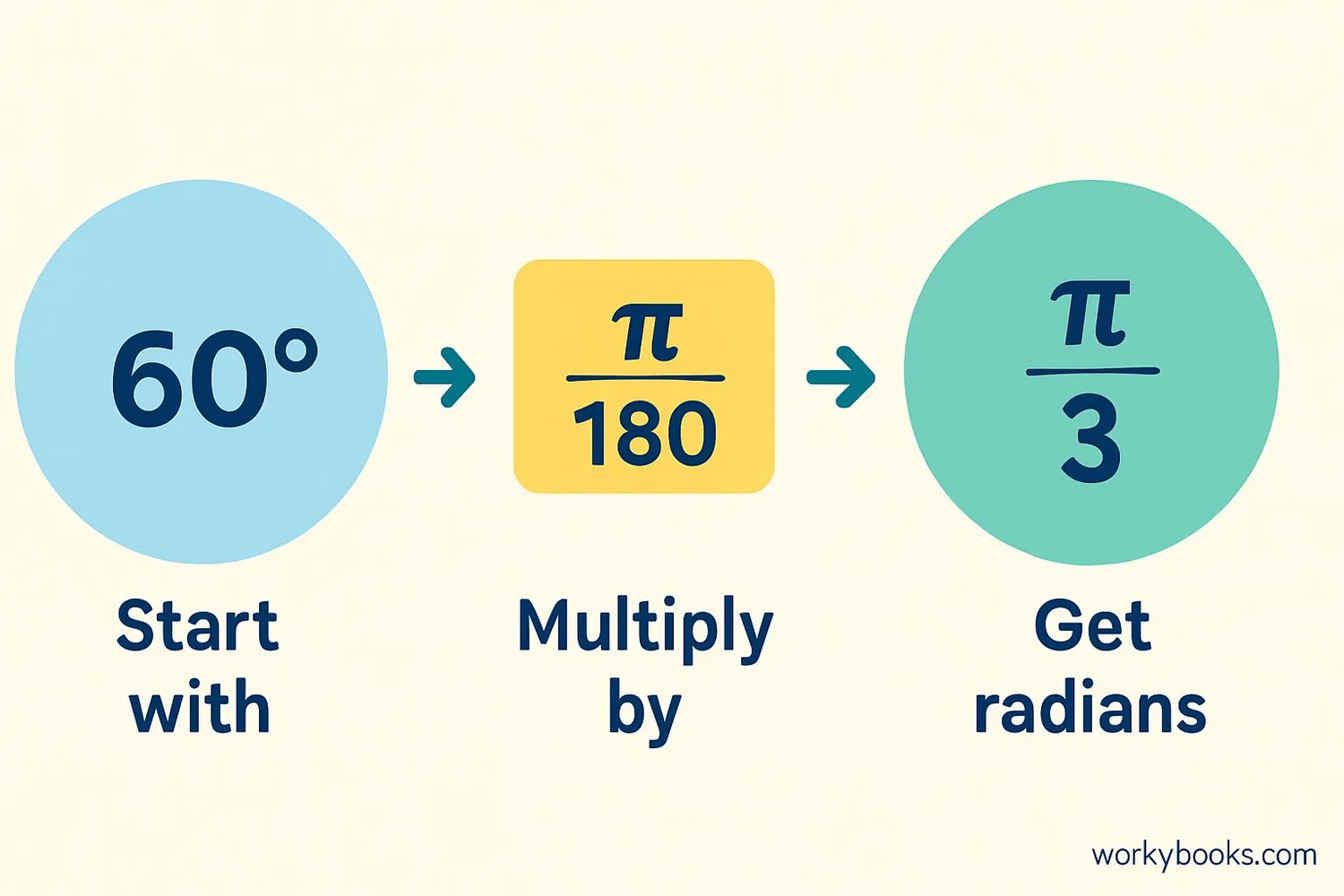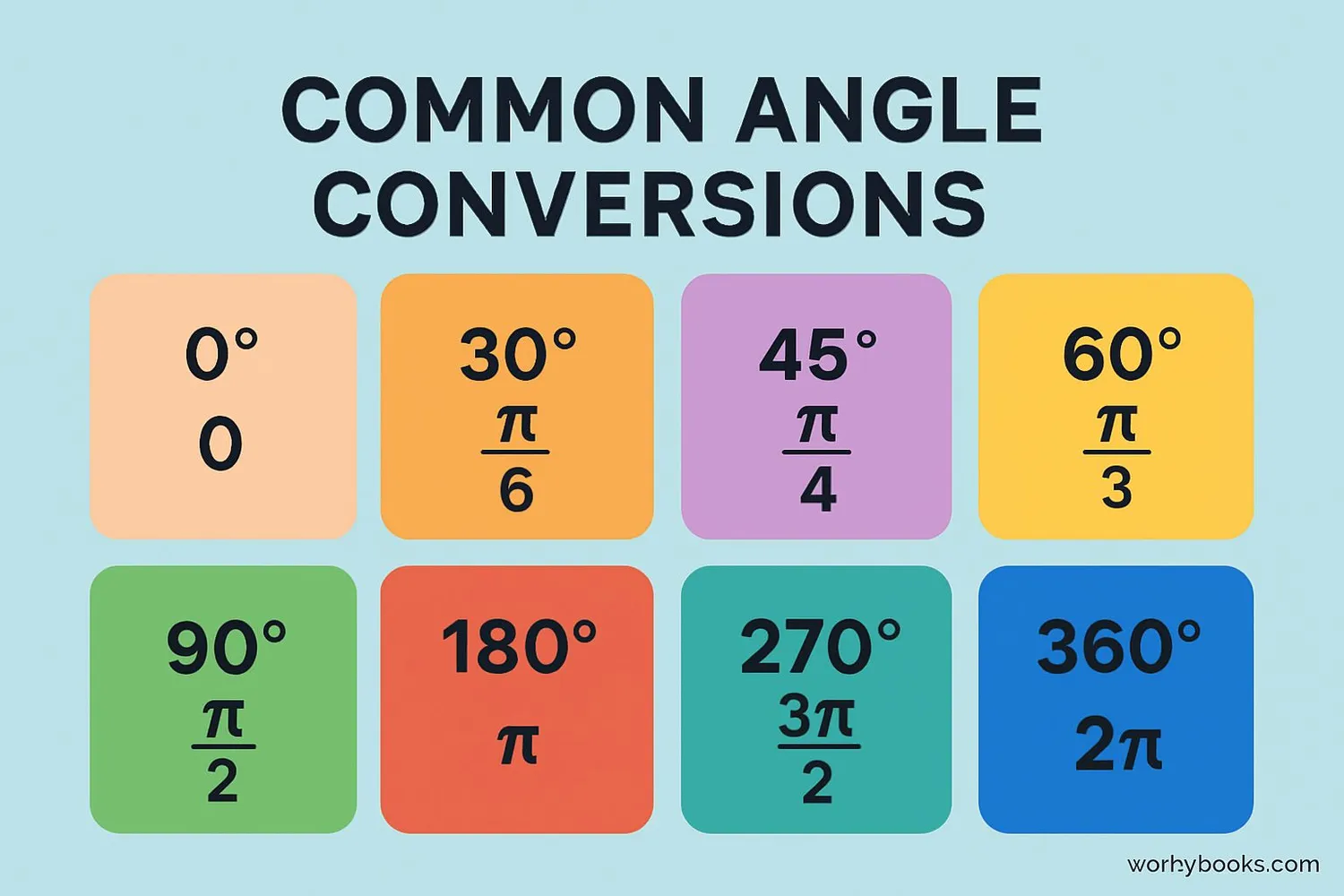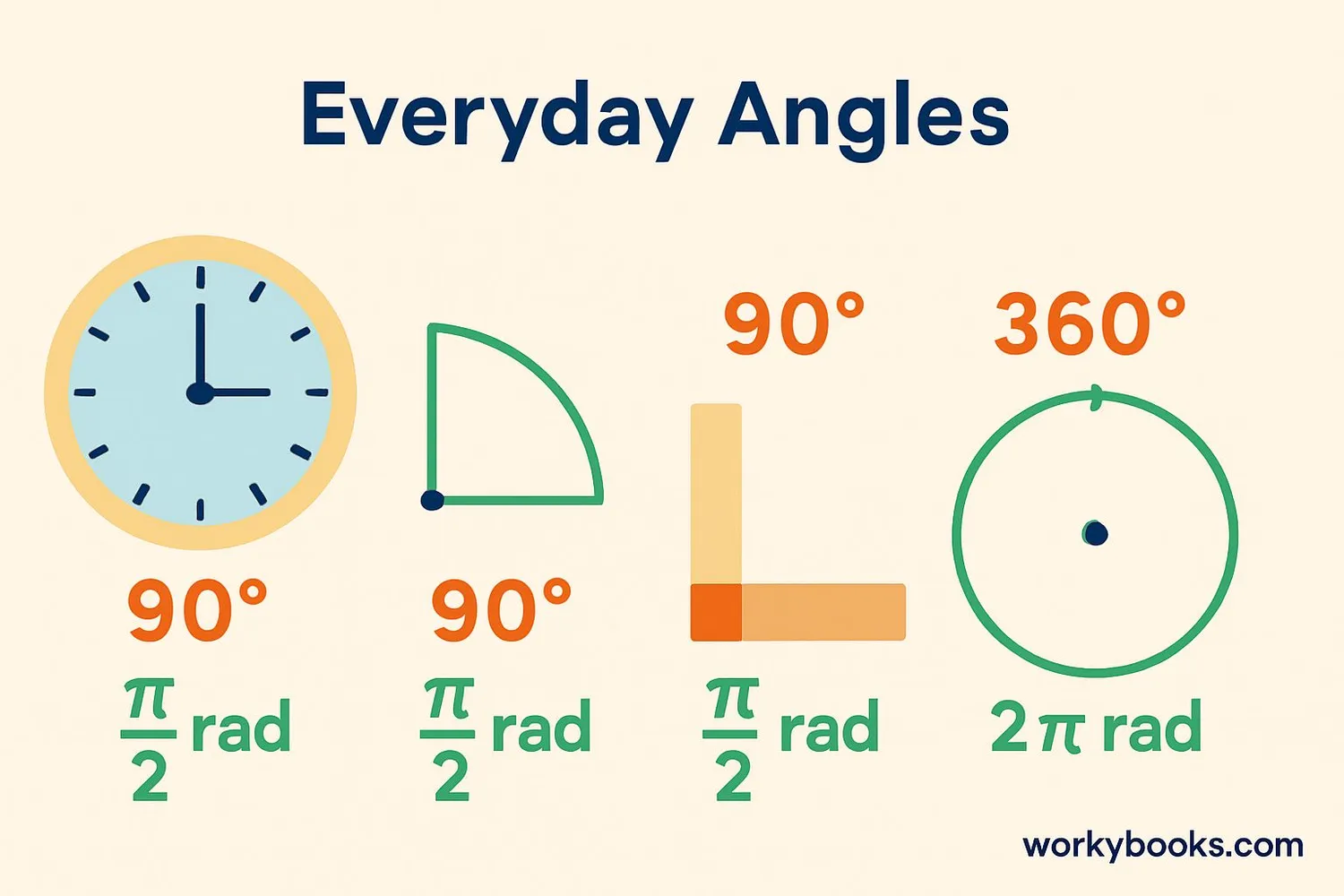60 Degrees to Radians (60° to rad) - Definition, Examples, Quiz, FAQ, Trivia
Learn to convert between degrees and radians with easy explanations and practice activities
What are Degrees and Radians?

Degrees and radians are two different ways to measure angles. Just like we can measure distance in inches or centimeters, we can measure angles in degrees or radians.
Degrees (°) are the most common way to measure angles. A full circle has 360 degrees. You've probably seen degrees on protractors in your math class!
Radians (rad) are another way to measure angles based on the radius of a circle. One radian is the angle created when the arc length equals the radius of the circle. There are 2π radians in a full circle (about 6.28 radians).
Why do we need both? Degrees are great for everyday measurements, while radians are especially useful in higher mathematics and physics because they simplify calculations.
Key Concept
360° = 2π radians. This relationship is the foundation for all degree-to-radian conversions.
How to Convert Degrees to Radians

Converting degrees to radians is simple with the conversion formula:
Conversion Formula
To convert any measurement in degrees to radians, multiply the number of degrees by π/180.
Step 1: Start with the measurement in degrees → 60°
Step 2: Multiply by π/180 → 60 × (π/180)
Step 3: Simplify the fraction → 60π/180 = π/3
So 60 degrees equals π/3 radians. That's about 1.047 radians, but we usually leave it as π/3.
Remember
Since π is approximately 3.1416, π/3 is about 1.047. But in math, we prefer to keep the π in our answers for exactness.
Degrees to Radians Conversion Charts

Conversion charts help us quickly find equivalent angle measurements without calculating each time. Here's a useful chart for converting degrees to radians:
Degrees to Radians Conversion Chart
| Degrees (°) | Radians (rad) | Radians (with π) |
|---|---|---|
| 0° | 0 rad | 0 |
| 30° | 0.5236 rad | π/6 |
| 45° | 0.7854 rad | π/4 |
| 60° | 1.0472 rad | π/3 |
| 90° | 1.5708 rad | π/2 |
| 120° | 2.0944 rad | 2π/3 |
| 180° | 3.1416 rad | π |
| 270° | 4.7124 rad | 3π/2 |
| 360° | 6.2832 rad | 2π |
Chart Tip
Notice how each 30° increment adds π/6 radians? You can use this pattern to estimate conversions for common angles!
Real-World Examples

Let's practice conversion with some real-world examples:
Example 1: A right angle is 90 degrees. What is this in radians?
Solution: 90 × (π/180) = 90π/180 = π/2 radians
Example 2: A straight line forms a 180° angle. Convert this to radians.
Solution: 180 × (π/180) = 180π/180 = π radians
Example 3: A pizza slice forms a 45° angle. What is this in radians?
Solution: 45 × (π/180) = 45π/180 = π/4 radians
Example 4: A full rotation is 360°. How many radians is this?
Solution: 360 × (π/180) = 360π/180 = 2π radians
Practice converting angles you see around you - the corner of a book (90°), the angle between clock hands, or the angle of a ramp!
Conversion Tip
To convert radians back to degrees, multiply by 180/π instead of multiplying by π/180.
Conversion Practice Quiz
Test your conversion skills with this 5-question quiz. Choose the correct answer for each question.
Frequently Asked Questions
Here are answers to common questions about degrees and radians conversion:
Angle Measurement Trivia
Discover interesting facts about angle measurement:
Origin of Degrees
The degree system dates back to ancient Babylonians who used a base-60 number system. They divided a circle into 360 parts (6×60), which is why we have 360 degrees in a circle.
Radians in Nature
Radians appear naturally in circular motion. When an object moves along a circular path, the angle it sweeps through is most naturally measured in radians.
Radians in Space
Astronomers use radians to measure very small angles. One arcsecond (1/3600 of a degree) is approximately 0.000004848 radians. This helps measure distances between stars!
The Special 60° Angle
60° angles create equilateral triangles where all sides are equal. The 60° angle and its π/3 radian equivalent are fundamental in trigonometry and geometry.





